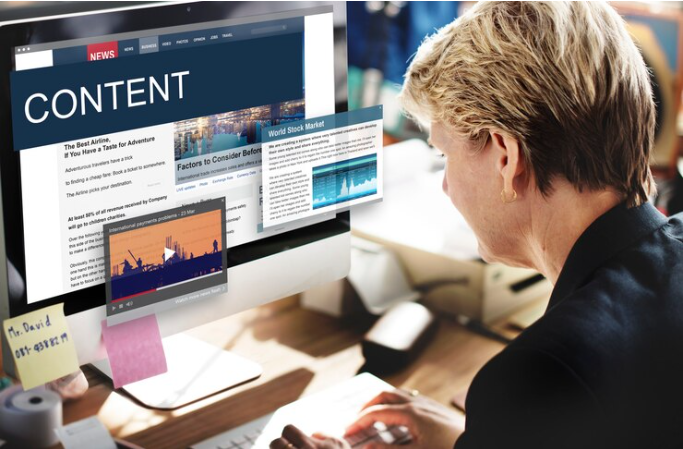Digitalnewsalerts: Get Instant Access in Latest News

Introduction to digitalnewsalerts
What are Digital News Alerts?
Digitalnewsalerts are notifications sent to users to inform them about the latest news, updates, or developments related to specific topics or keywords of interest. These alerts can be delivered via various channels, including email, mobile apps, browser extensions, and social media platforms.

Evolution of News Consumption
Traditionally, people relied on newspapers, television, and radio broadcasts to get their daily dose of news. However, with the advent of the internet and digital technologies, the way we consume news has undergone a significant transformation. Digital news alerts represent the latest evolution in news delivery, offering real-time updates tailored to individual preferences.
Table of Contents
Importance of Timely Information
In today’s fast-paced world, timely information can make all the difference. Whether it’s staying ahead of market trends, tracking developments in your industry, or being informed about world events, having access to up-to-date news is essential. digitalnewsalerts enable users to stay informed in real-time, ensuring they never miss out on important information.
How Digital News Alerts Work
Automated Monitoring Systems
Digitalnewsalerts are powered by automated monitoring systems that continuously scan thousands of online sources, including news websites, blogs, forums, and social media platforms, for relevant content. These systems use advanced algorithms to identify articles, posts or mentions that match the user’s specified keywords or criteria.
Keyword-Based Alerts
One of the key features of digitalnewsalerts is their ability to deliver targeted information based on specific keywords or topics of interest. Users can create custom alerts by entering relevant keywords or phrases related to their areas of interest. The alert system then monitors online sources for any content containing those keywords and sends notifications accordingly.
Customization Options
Digitalnewsalerts offer a high degree of customization, allowing users to tailor their alert preferences according to their preferences and requirements. Users can choose the frequency of alerts, the sources to monitor, the types of content to include, and the channels through which alerts are delivered. This flexibility ensures that users receive relevant and timely information without being overwhelmed by irrelevant updates.
Benefits of DigitalNewsAlerts

Stay Informed in Real-Time
One of the primary benefits of digital news alerts is the ability to stay informed in real-time. Instead of manually searching for news updates, users receive instant notifications whenever new information relevant to their interests becomes available. This real-time access to news ensures that users are always up-to-date and can react promptly to any developments.
Customized Information Delivery
digitalnewsalerts allow users to customize the type of information they receive and how it is delivered. Whether it’s breaking news, industry updates, or niche topics, users can tailor their alert preferences to ensure they receive the most relevant and timely information. This customization ensures that users receive information that aligns with their interests and priorities.
Efficient Monitoring of Multiple Sources
With the vast amount of information available online, keeping track of multiple news sources can be a daunting task. Digitalnewsalerts streamline this process by automatically monitoring a wide range of sources on behalf of the user. Whether it’s news websites, blogs, social media platforms, or online forums, digitalnewsalerts aggregate relevant information from multiple sources into one convenient location.
Types of Digital News Alerts
Email Alerts
Email alerts are one of the most common forms of digitalnewsalerts, where users receive notifications directly to their email inbox. These alerts typically include a summary of the news story or update, along with a link to the full article or source. Email alerts are convenient for users who prefer to receive news updates alongside their other email communications.
Mobile App Notifications
Many news organizations and platforms offer mobile apps that provide push notifications for breaking news and updates. Users can download these apps to their smartphones or tablets and receive notifications directly to their device’s home screen. Mobile app notifications are ideal for users who want to stay informed on the go and have instant access to news updates.
Browser Extensions
Browser extensions are another popular way to receive digitalnewsalerts, where users install a plugin or extension on their web browser. These extensions monitor news websites in the background and notify users when new articles or updates are available. Browser extensions are convenient for users who spend a lot of time online and want to receive news updates while browsing the web.
Social Media Alerts
Many social media platforms offer built-in alert systems that notify users about trending topics, news stories, or updates from their network. Users can customize their alert preferences within the platform settings to receive notifications for specific keywords or topics. Social media alerts are ideal for users who are active on social media and want to stay informed about the latest news and trends.
Choosing the Right Digital News Alert Service

Features to Consider
When choosing a digitalnewsalerts service, there are several key features to consider. These include the range of sources monitored, the customization options available, the frequency of alerts, the reliability of the alert system, and the user interface and experience. Evaluating these features can help users determine which alert service best suits their needs and preferences.
Popular News Alert Services
There are numerous digitalnewsalerts services available, each offering its own unique features and capabilities. Some of the most popular news alert services include Google Alerts, Talkwalker Alerts, Mention, and News360. These services vary in terms of their coverage, customization options, and alert delivery methods, so users should explore their options and choose the service that best meets their requirements.
Comparison of Different Platforms
To help users make an informed decision, it’s essential to compare the features and capabilities of different digital news alert platforms. Users can evaluate factors such as the accuracy and relevance of alerts, the ease of use of the platform, the availability of advanced features such as sentiment analysis or topic clustering, and the cost of the service. By comparing these factors, users can identify the platform that offers the best value and functionality for their needs.
Setting Up Digital News Alerts
Selecting Relevant Keywords
The key to effective digital news alerts is selecting relevant keywords or topics that align with your interests and information needs. Users should choose keywords that are specific enough to filter out irrelevant content but broad enough to capture relevant updates. It’s also essential to consider synonyms, acronyms, and variations of keywords to ensure comprehensive coverage.
Customizing Alert Preferences
Once you’ve selected your keywords, you can customize your alert preferences to fine-tune the type and frequency of alerts you receive. This may include specifying the sources to monitor, setting the frequency of alerts (e.g., daily, weekly), choosing the types of content to include (e.g., news articles, blog posts, social media mentions), and selecting the delivery channels (e.g., email, mobile app).
Managing Alerts for Optimal Results
As you start receiving alerts, it’s essential to monitor and manage them effectively to avoid information overload. This may involve refining your keyword selection, adjusting your alert preferences based on the relevance of the content you receive, and unsubscribing from alerts that no longer align with your interests. By actively managing your alerts, you can ensure that you receive timely and relevant information without being overwhelmed by irrelevant updates.
Best Practices for Using Digital News Alerts
Refining Keyword Selection
Periodically review and refine your keyword selection to ensure that your alerts capture the most relevant and up-to-date information. This may involve adding new keywords, removing irrelevant ones, and adjusting your search criteria based on emerging trends or changes in your interests. By refining your keyword selection regularly, you can optimize the relevance and effectiveness of your alerts.
Managing Alert Overload
Digital news alerts can generate a significant amount of information, which may overwhelm users if not managed effectively. To avoid alert overload, consider prioritizing alerts based on their importance and relevance, setting up filters or folders to organize incoming alerts, and using tools or features provided by your alert service to streamline the monitoring process. Additionally, it’s essential to allocate dedicated time for reviewing and processing alerts to ensure that you stay informed without feeling overwhelmed.
Verifying Sources and Fact-Checking
While digital news alerts provide convenient access to information, it’s crucial to verify the sources and fact-check the content before relying on it for decision-making or sharing with others. Not all sources are credible or trustworthy, and misinformation or fake news can spread rapidly, especially online. Take the time to evaluate the reliability and credibility of the sources cited in your alerts, cross-reference information from multiple sources, and critically assess the accuracy and objectivity of the content.
Applications of Digital News Alerts

Business and Market Intelligence
Digital news alerts are invaluable for businesses and organizations seeking to stay informed about market trends, competitor activities, regulatory changes, and other developments that may impact their operations. By monitoring relevant keywords and topics, businesses can gain valuable insights into industry trends, customer preferences, and emerging opportunities or threats.
Academic Research
Researchers and academics can use digital news alerts to stay abreast of the latest research findings, scholarly publications, and academic conferences relevant to their field of study. Alerts can be set up to notify researchers about new articles, journal issues, or conference proceedings related to specific topics or keywords, enabling them to stay informed about developments in their area of expertise.
Crisis Management
Digital news alerts play a crucial role in crisis management and emergency response by providing real-time updates and situational awareness during emergencies, disasters, or crises. Organizations and government agencies can use alerts to monitor news coverage, social media activity, and public sentiment, enabling them to assess the situation, coordinate response efforts, and communicate effectively with stakeholders.
Personal Interests and Hobbies
On a personal level, digital news alerts can be used to stay informed about topics of personal interest, hobbies, or leisure activities. Whether it’s following your favorite sports team, staying up-to-date on the latest fashion trends, or tracking developments in a niche hobby or passion project, alerts can deliver relevant and timely information tailored to your individual interests.
Privacy and Security Considerations
Data Protection Measures
When using digital news alerts, it’s essential to consider privacy and data protection measures to safeguard your personal information and sensitive data. Choose reputable alert services that have robust security protocols in place to protect user data and ensure compliance with data privacy regulations. Review the privacy policy and terms of service of the alert service to understand how your data is collected, stored, and used.
Risks of Information Overload
While digital news alerts provide valuable access to information, they can also pose risks of information overload if not managed effectively. Too many alerts or irrelevant updates can overwhelm users and distract them from more critical tasks or priorities. To mitigate the risk of information overload, be selective about the alerts you subscribe to, set up filters or preferences to prioritize important updates, and establish boundaries for when and how you engage with alerts.
Avoiding Malicious Sources
Be cautious when subscribing to digitalnewsalerts from unfamiliar or unverified sources, as they may contain malicious content, spam, or misinformation. Stick to reputable news organizations, trusted publishers, and established alert services with a track record of reliability and credibility. Avoid clicking on suspicious links or downloading attachments from unknown sources, as they may contain malware or phishing attempts.
Future Trends in digitalnewsalerts
Artificial Intelligence and Machine Learning
The future of digitalnewsalerts is likely to be shaped by advancements in artificial intelligence (AI) and machine learning technologies. AI-powered algorithms can analyze vast amounts of data, detect patterns, and personalize content recommendations based on user preferences and behavior. Machine learning algorithms can also improve the accuracy and relevance of alerts over time by learning from user interactions and feedback.
Integration with Smart Devices
As smart devices become increasingly ubiquitous, digitalnewsalerts are expected to be seamlessly integrated into connected devices such as smart speakers, wearables, and IoT (Internet of Things) devices. Users will be able to receive news updates and alerts through voice commands, notifications, or visual displays, allowing for hands-free access to information wherever they are.
Personalized News Delivery
Personalization will continue to be a key trend in digitalnewsalerts, with alert services leveraging user data and preferences to deliver highly tailored and relevant content. Personalized alerts may incorporate factors such as location, demographics, browsing history, and social media activity to curate news updates that are customized to individual interests and preferences.
Conclusion
Digitalnewsalerts have revolutionized the way we consume and access information in the digital age, offering real-time updates, personalized content, and convenient delivery options. Whether it’s staying informed about current events, tracking industry trends, or pursuing personal interests, digitalnewsalerts empower users to stay connected and engaged with the world around them. By leveraging the benefits of digital news alerts and adopting best practices for their use, individuals and organizations can harness the power of information to make informed decisions, drive innovation, and stay ahead in an ever-changing world.
More Articles




